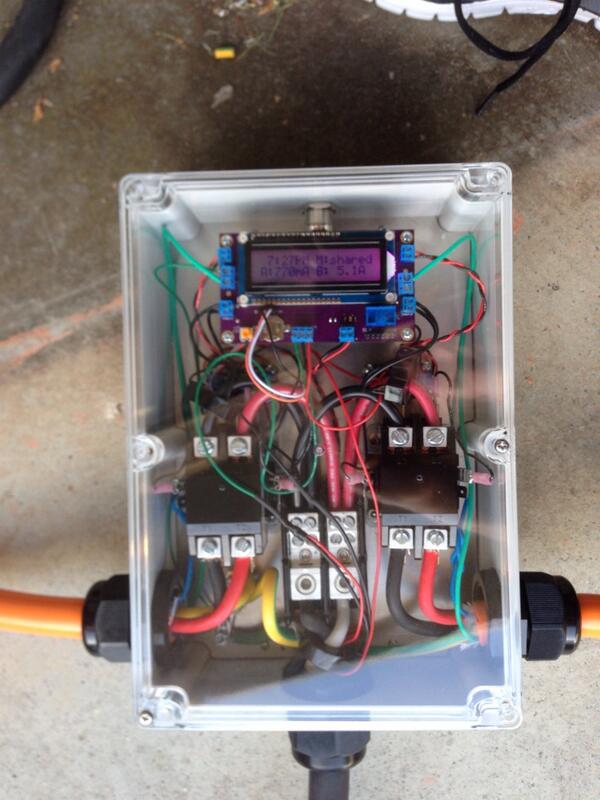The J1772 Hydra is a sort of outgrowth project of OpenEVSE. There are two variants of the Hydra. The original "splitter" variant has a J1772 inlet and two plugs. It's intended to be used on a "host" EVSE and allows connecting two cars at once. As long as both cars are charging, each is allotted half of the available current. When one car finishes, the other is brought up to 100% power (there are also per-car limits in the code, so that the design maximum of each car's high current path cannot be exceeded accidentally).
The second variant is a straight-up two head EVSE. It connects to either 120v (but why would anyone bother?) or 240 VAC power and has a UI to set the available current (much like OpenEVSE). Like the splitter Hydra, when both cars are charging, each is granted 50% power, but when one stops, the other gets 100%.
Both Hydras also have a sequential mode that can be used if desired. In sequential mode, only one car is given power at a time. When the first car finishes, the other car is given a chance.
The EVSE variant has a real-time clock built in and you can set up up to 4 time events with day-of-week flagging. The events can "pause" or "unpause" the Hydra, for those who want to connect two cars up in the early evening and have them start charging when the rates are low and have both of them finished in the morning (without having to move the plug at 2 AM).
The reference design uses 30A 12VDC coil relays, but I also have "contactor adapter" boards that use an opto-isolated triac to drive a line powered contactor. Using those, I built what I call "mega-Hydra," which is rated to charge a single car at 50 amps or two cars simultaneously at 25A.

Anyone who is moderately handy with tools and basic wiring can build a Hydra. If you buy the logic board fully assembled, then no soldering is required at all.
More info is at the OpenEVSE wiki: https://code.google.com/p/open-evse/wiki/Hydra
The second variant is a straight-up two head EVSE. It connects to either 120v (but why would anyone bother?) or 240 VAC power and has a UI to set the available current (much like OpenEVSE). Like the splitter Hydra, when both cars are charging, each is granted 50% power, but when one stops, the other gets 100%.
Both Hydras also have a sequential mode that can be used if desired. In sequential mode, only one car is given power at a time. When the first car finishes, the other car is given a chance.
The EVSE variant has a real-time clock built in and you can set up up to 4 time events with day-of-week flagging. The events can "pause" or "unpause" the Hydra, for those who want to connect two cars up in the early evening and have them start charging when the rates are low and have both of them finished in the morning (without having to move the plug at 2 AM).
The reference design uses 30A 12VDC coil relays, but I also have "contactor adapter" boards that use an opto-isolated triac to drive a line powered contactor. Using those, I built what I call "mega-Hydra," which is rated to charge a single car at 50 amps or two cars simultaneously at 25A.

Anyone who is moderately handy with tools and basic wiring can build a Hydra. If you buy the logic board fully assembled, then no soldering is required at all.
More info is at the OpenEVSE wiki: https://code.google.com/p/open-evse/wiki/Hydra
